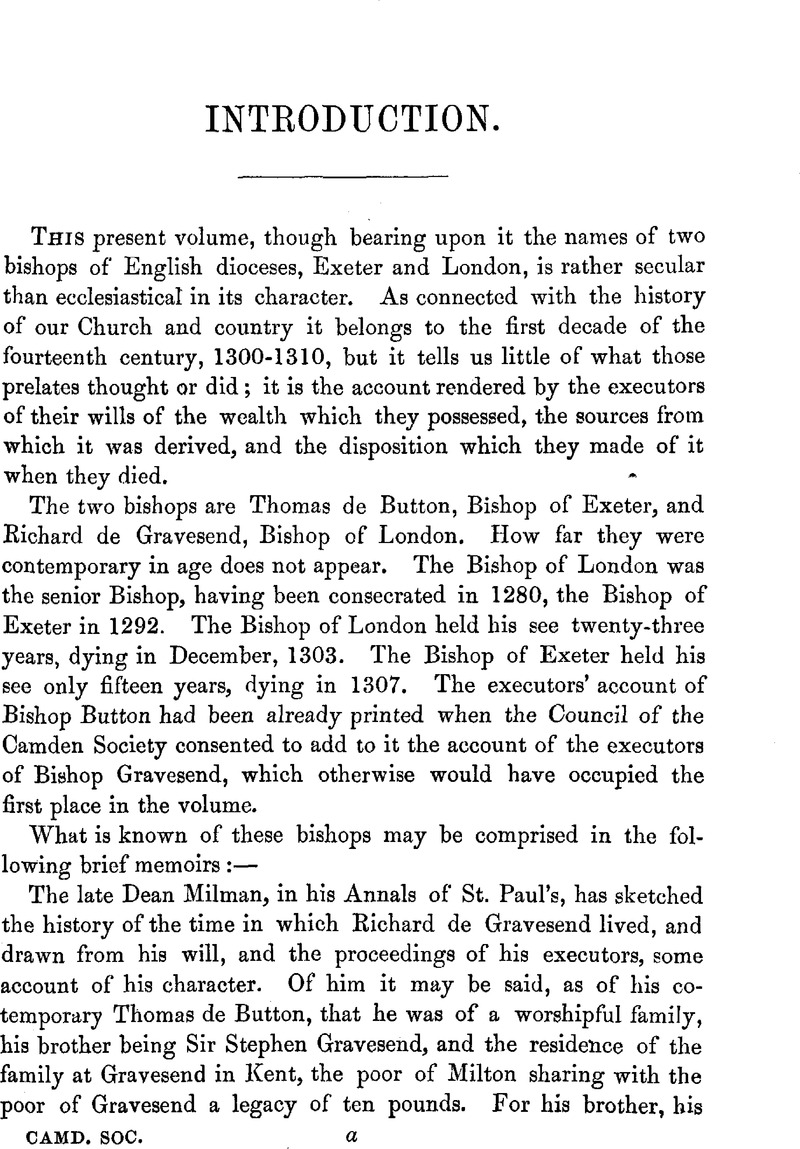No CrossRef data available.
Published online by Cambridge University Press: 24 December 2009

Page ii note a The family of Thomas de Bytton, alias Button, Bishop of Exeter, lived at Hannam, in the parish of Bitton, Gloucestershire. In 12 Edw. I. Plea Roll. Mic. (52), when Dean of Wells, he recovered a right of estover in Bitton, on the death of his mother, who had a life interest in it, as it had always been enjoyed by William de Bitton, his uncle, whose heir he was.
Page ii note b See his pedigree in Nichols's Herald and Genealogist, Jan. 1867.
Page ii note c Archdeacon Freeman, in his elegant book just published about Exeter Cathedral, proves, from the archives of the Cathedral, that from 1292 to 1307 he reconstructed and transformed the entire choir, with its aisles, in the Decorated style, as we now see them, and carried on the work which had been begun by his predeeessor Bishop Quivil.
Page ii note d See Copy of Ordinance of this Chantry in the Bristol Volume of the Archeeological Institute, 1851, p. 260. It is dated May, 1290. In 1822 a stone coffin was discovered at the foot of the altar-steps. Views of the beautiful triple sedilia are represented in Collings' “Details of Gothic Architecture,” vol. ii. pl. 52, 53.
Page iii note a See engraving of this tomb at the end
Page iii note b The same arms are in the east window of Exeter Cathedral, the choir of which was the work of this eminent bishop.
Page iv note a See engraving annexed.
Page xvi note a The house is now called Bishop's Court; the present possessor, John Garratt, Esq. has lately restored the desecrated chapel and fitted it for domestic services.